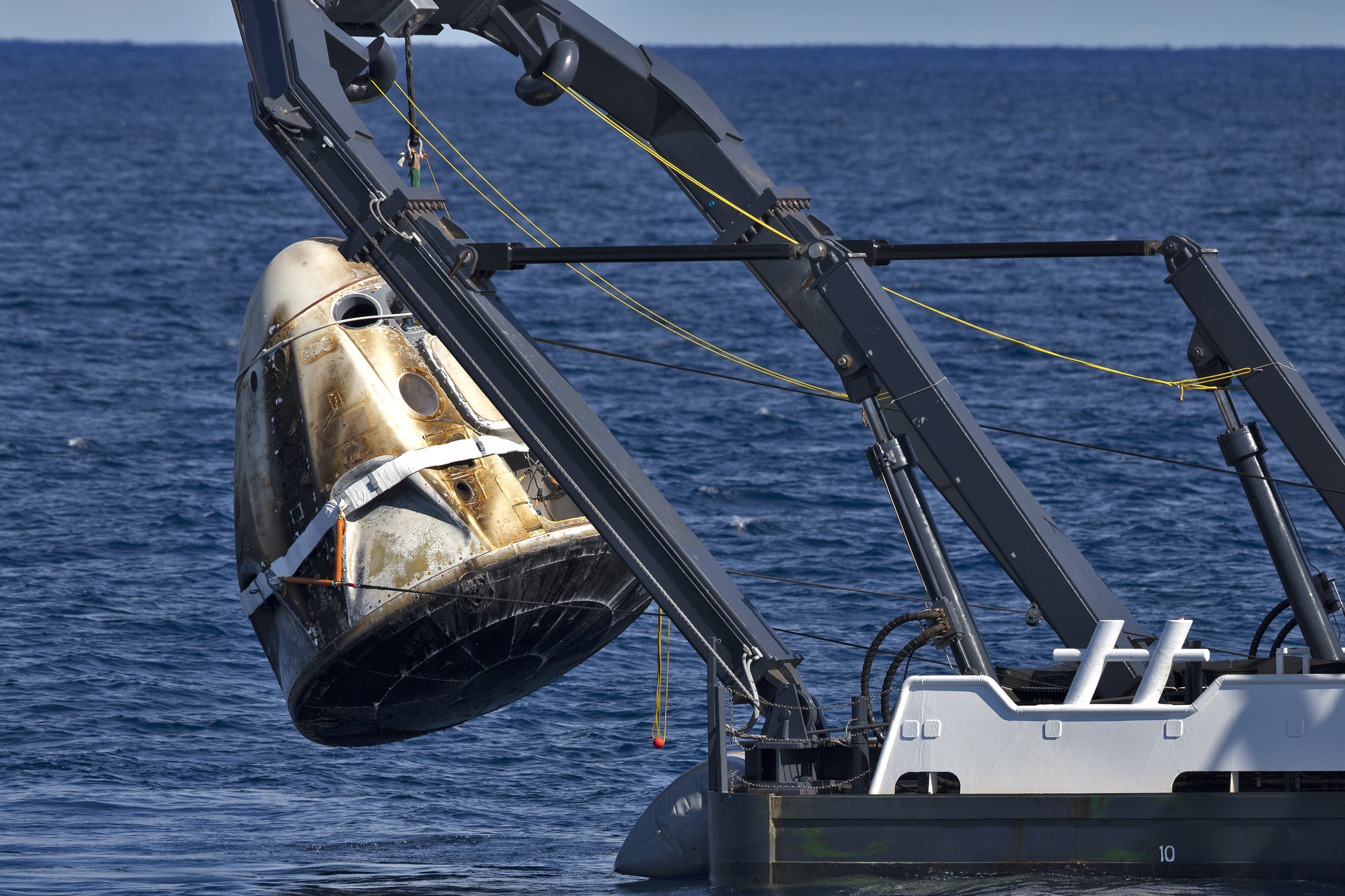
The investigation into the destruction of SpaceX's astronaut taxi last month is proceeding apace.
On April 20, a Crew Dragon capsule exploded during a routine "static fire" test of the craft's emergency-escape thrusters at Cape Canaveral Air Force Station in Florida. Nobody was hurt, but the spacecraft — which in March successfully flew an uncrewed test mission to the International Space Station (ISS) called Demo-1 — was lost.
SpaceX and NASA have managed to clean up the accident site and are now focusing on what caused the mishap, agency officials announced today (May 28).
Related: SpaceX Dragon Accident a Bump in the Road for Commercial Crew
"Teams have completed work to ensure the site is safe and are focusing on the root-cause analysis, which will determine the impact to commercial crew" flight tests, NASA officials wrote in an update.
SpaceX holds a multibillion-dollar deal to fly NASA astronauts to and from the ISS using Crew Dragon and the company's Falcon 9 rocket.
SpaceX and NASA aim to launch astronauts to the orbiting lab aboard Crew Dragon before the end of the year. SpaceX just needs to check off another key milestone first: an in-flight abort test, which is an uncrewed mission designed to show that the capsule's SuperDraco escape thrusters can rocket Crew Dragon to safety in the event of a launch emergency.
Get the Space.com Newsletter
Breaking space news, the latest updates on rocket launches, skywatching events and more!
After that will come Demo-2, a test mission that will send two astronauts to the ISS. Operational, contracted flights will follow Demo-2.
The Crew Dragon that was lost in last month's accident had been slated to fly the in-flight abort mission. So, SpaceX has to rejigger its capsule assignments.
"SpaceX had several Crew Dragon vehicles in production, and [the company] plans to shift the spacecraft assignments forward," NASA officials wrote in the statement. "The spacecraft originally assigned to Demo-2, the first flight test with a crew onboard, now will be used for the company's in-flight abort test, and the first operational mission spacecraft will be used for Demo-2."
NASA did not issue a revised flight timeline. "NASA and SpaceX remain committed to the safety of our astronaut and ground crews and will proceed with flight tests when ready," officials wrote in today's update.
SpaceX has fired SuperDracos hundreds of times in previous tests with no problems, company representatives have said. On April 20, the company successfully fired the Crew Dragon's Draco thrusters, which enable the capsule to maneuver in space. The anomaly occurred just before the team planned to engage the SuperDracos.
Aerospace giant Boeing also holds a commercial crew deal with NASA. The company plans to fulfill its contract using a capsule called the CST-100 Starliner, which will launch atop a United Launch Alliance Atlas rocket.
- SpaceX's Crew Dragon Demo-1 Test Flight in Pictures
- In Photos: A Behind-the-Scenes Look at SpaceX's Crew Dragon Spaceship
- The Emergency Launch Abort Systems of SpaceX and Boeing Explained
Mike Wall's book about the search for alien life, "Out There" (Grand Central Publishing, 2018; illustrated by Karl Tate), is out now. Follow him on Twitter @michaeldwall. Follow us on Twitter @Spacedotcom or Facebook.
Join our Space Forums to keep talking space on the latest missions, night sky and more! And if you have a news tip, correction or comment, let us know at: community@space.com.

Michael Wall is a Senior Space Writer with Space.com and joined the team in 2010. He primarily covers exoplanets, spaceflight and military space, but has been known to dabble in the space art beat. His book about the search for alien life, "Out There," was published on Nov. 13, 2018. Before becoming a science writer, Michael worked as a herpetologist and wildlife biologist. He has a Ph.D. in evolutionary biology from the University of Sydney, Australia, a bachelor's degree from the University of Arizona, and a graduate certificate in science writing from the University of California, Santa Cruz. To find out what his latest project is, you can follow Michael on Twitter.









